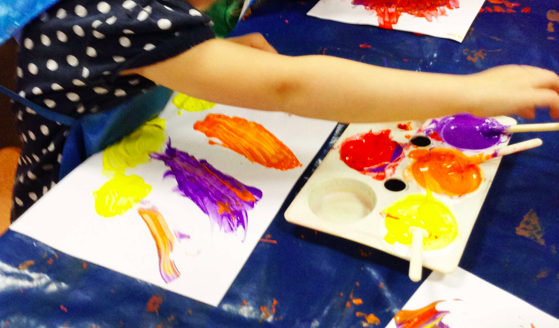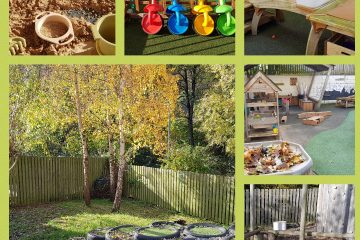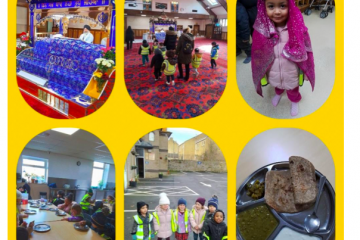Mark making is the term used for the creation of patterns, lines, textures and shapes. It can be on paper, in sand, on the floor or any object or surface both inside and outdoors. Mark making is a sensory and physical experience which can be enjoyed by all ages and abilities. Mark making in all forms needs to be valued, encouraged and discussed. It supports a child’s learning by allowing them to;
Investigate a new concept
Represents thoughts and ideas
Develop their understanding of the world
Tell a story
Solve problems
Express their feelings
Create a gift for someone
Relive an experience
Record what they see
It is easy to provide a mark making activity at home and mark making doesn’t have to be with just brushes or pens! Try using your hands, a sponge, foil or greaseproof paper, feathers, leaves or sticks from outside, cotton wool, string, spoons, forks or whisks, carrots, potatoes even toothbrushes! The list is endless.
Begin with large sheets of paper or space to allow the young child to use large movements from the shoulder and develop large motor skills first. Crawling, running, hopping, skipping, pulling and pushing all help to develop core strength. Children need to have strength and control of over 25 different muscles to be able to write a word!
At 2 to 3 years of age a child will begin to give meaning to their marks, telling you what they represent. It may not resemble this to you but to the child it does so please show encouragement and appreciate their efforts.
At 3 to 4 years of age the child will begin to present symbolic writing, even though their marks may not resemble recognisable letters or number shapes they will often attempt to make marks that they see in front of them. Children who are familiar with print and are read to on a regular basis often display this stage of mark making earlier than children who are less familiar with how print is written.
In nursery we provide mark making in all areas of play, indoors and outside, all day long without restriction as it is such a vital part of a child’s development and a thoroughly enjoyable activity.
How you can help
Research has found that the type of support you give is vital. It sounds really simple but the best thing you can do is just sit, watch and listen; showing interest as your child draws and enjoys themselves. When you do ask a question or give encouragement – it’s better to focus on the effort than the outcome. (You’ll find some examples below.) Researchers have found asking questions such as “What is it?” can lead to discouragement as your child may think they’ve failed to produce the “art” you want. In nursery we believe the process is more important than the product.
Positive feedback:
- “You’ve been working hard. There’s lots of dots on this drawing!”
- “Is it fun moving the crayon round and round?”
- “We’ll put this on the fridge, so Dad can see it when he gets home!”
- “Let’s put this one in an envelope and send it to grandma!”
Less effective feedback:
- “What’s that?” (“Tell me about your drawing” is better.)
- “You forgot the arms!”
- “Try drawing your house like this…”
- “No, the sky is blue. Here’s the blue crayon




